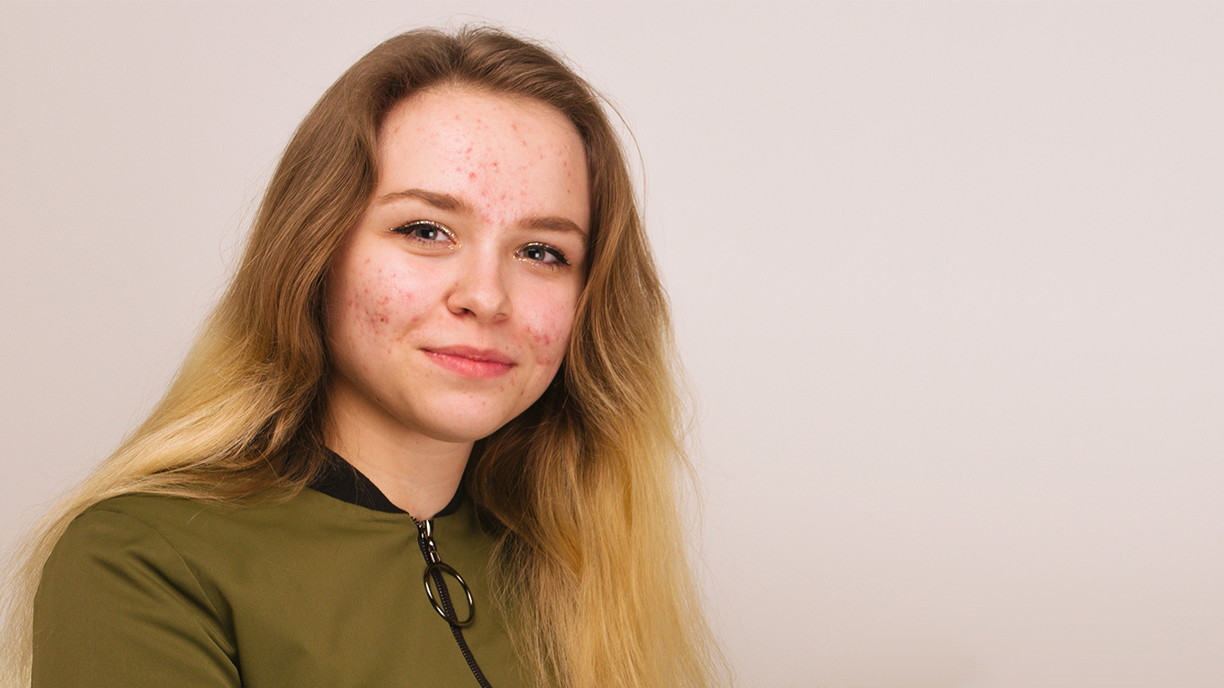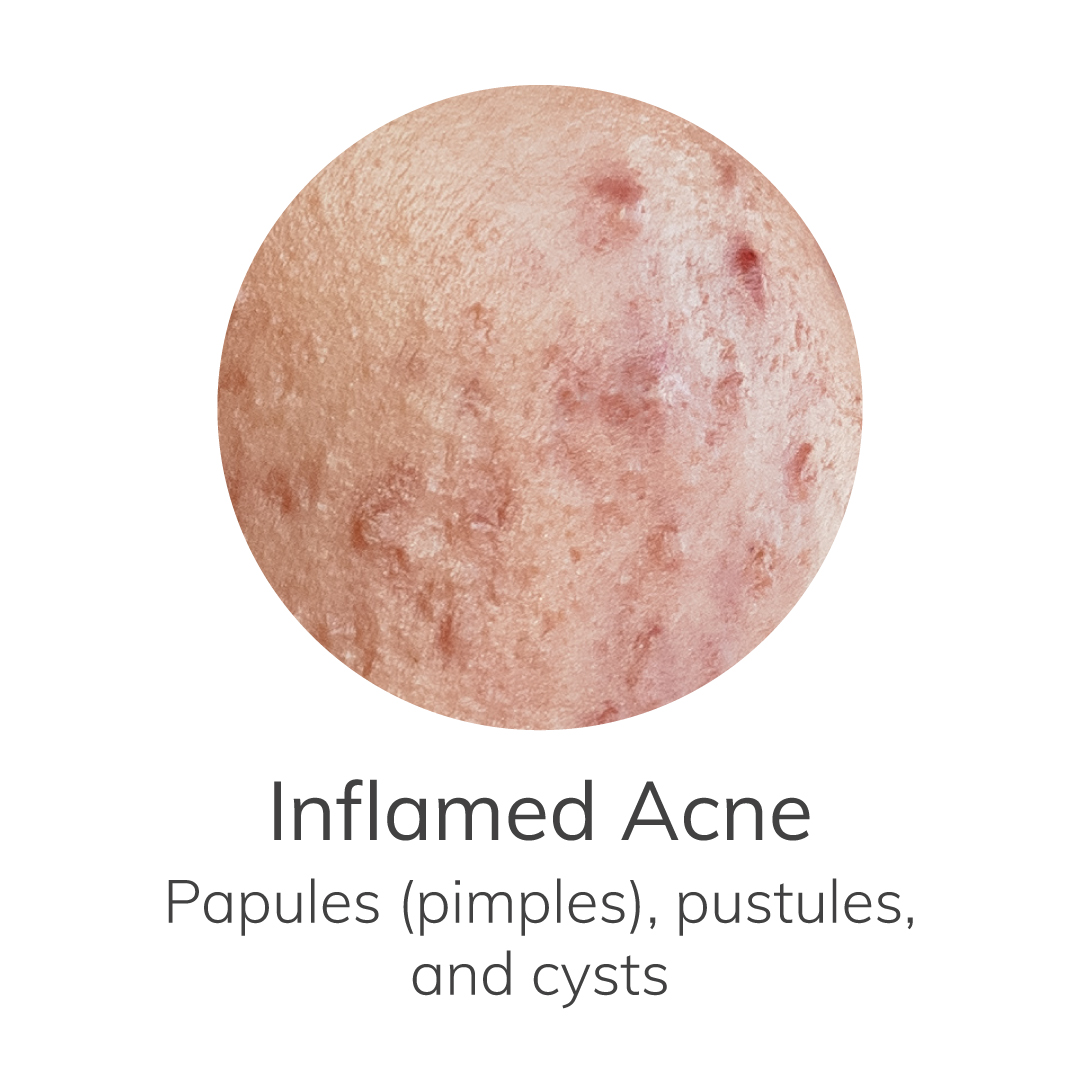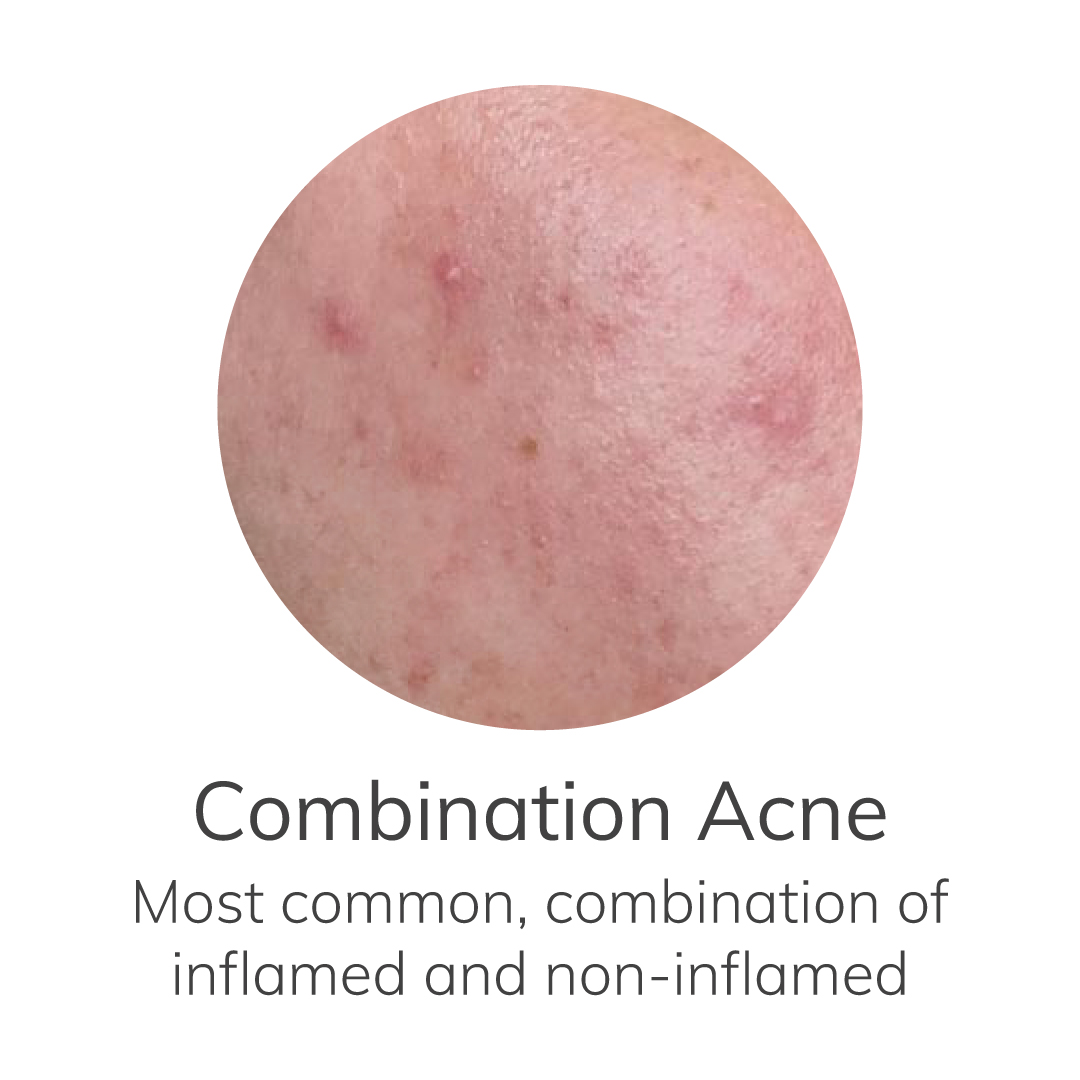
Getting to know your skin and how to best care for it is a huge step towards healthy, clear skin. Now that you have a better understanding of what acne is and what causes it from Acne Lesson 1, let’s look at how to determine the severity of your acne and learn about the different types of acne and treatments. Being familiar with your skin type and the type of acne you have is crucial in making decisions about your acne treatment plan.
DISCOVER THE SEVERITY OF YOUR ACNE
Common acne, or acne vulgaris, is categorized into three stages of severity: mild, moderate, and severe. Here is a guide to verify which stage of acne you have:
- Mild Acne: Acne is considered to be mild if 10 or fewer lesions are present at a time.
- Moderate Acne: If there are 10 to 30 lesions at once, acne is considered moderate.
- Severe Acne: A severe form of acne is marked by having 30+ lesions at a given time.



WHAT TYPE OF ACNE DO I HAVE?
Here I’ve outlined the three main types of acne, what to look for, and basic treatment options. Please note, most commonly, acne is a combination of inflamed and non-inflamed. We must always start by treating the inflamed acne first.
NON-INFLAMED ACNE
Non-inflamed acne consists of blackheads and whiteheads (open and closed comedones), and occurs when the pores become clogged with sebum and dead skin cells. It can also appear as little pebbles under the skin that are hard to see and don’t extract (see Maturation Arrest below). In treating non-inflamed acne, you will need a combination of mechanical and chemical exfoliation to clear your skin.
INFLAMED ACNE
Inflamed acne consists of papules (pimples), pustules, and cysts. Skin will be inflamed, red, and warm to the touch due to the presence of bacteria along with sebum and dead skin cells in the pores. Your acne specialist will most commonly put you on a combination of mandelic acid and benzoyl peroxide, and suggest icing for the inflammation. Supplements will also be recommended to optimize gut health. It’s imperative to use acne-safe hydrating gels and moisturizers to prevent dehydration and ample sun protection during treatment as well.
COMBINATION ACNE
Most commonly, both inflamed and non-inflamed acne are present simultaneously. This type of acne often requires a combination of strategies to get clear. Working closely with your acne specialist will be crucial to plan out a customized regimen to effectively clear your skin. In the case of combination acne, inflamed lesions must be cleared prior to treating the non-inflamed acne.
OTHER COMMON SKIN CONDITIONS
ACNE ROSACEA
Often misdiagnosed as acne, rosacea is known for inflamed facial redness and sensitized skin that may burn or sting. Rosacea is more common in women and typically begins after age thirty with flushing or redness on the cheeks, nose, chin, or forehead that may come and go. Over time, the redness tends to become more persistent, and visible blood vessels can appear. Left untreated, pus-filled bumps that resemble acne may emerge. To learn more about the symptoms, causes, and treatments associated with rosacea, click HERE.
MATURATION ARREST ACNE
If you have small pebble-like bumps that have hardened beneath the surface of your skin, you likely have what’s called maturation arrest acne, or closed comedones trapped under the skin. This type of acne is many times not visible until you pull your skin taut. Although generally not inflamed or painful, it can give your skin an uneven or dull appearance. Treating maturation arrest acne can be quite difficult and requires the advice and support of an Art of Skin Care certified acne specialist. Click HERE to learn more about the causes and treatment options for this type of acne.
FOLLICULITIS, THE ACNE IMPOSTER
It’s easy to confuse folliculitis with acne because it can appear as small, red bumps on the face that may be itchy or painful. Anytime you see “itis” in a word, it refers to infection or inflammation. Folliculitis translates to “inflammation of the hair follicle.” It’s a common skin condition that occurs when hair follicles become infected with bacteria or fungi. It can occur anywhere on the body where there are hair follicles, but is most commonly found on the scalp, forehead, jawline, neck, chest, and back. To learn more about folliculitis as well as how to treat it, click HERE.
HOW LONG DOES IT TAKE TO GET RID OF ACNE?
Reaching your clear skin goals requires consistent care and a close partnership with your Art of Skin Care acne specialist. While many clients see improvement within a few weeks, more severe cases see excellent progress in about 90 days. Most achieve clear, healthy skin within six to nine months. Read on in our acne lessons to learn more.
See Lesson 3 to learn more about the clear skin challenge. >>>
Comments (2)
Which of your products are safe for breastfeeding?
Hi Jennifer! When breastfeeding you will just want to avoid Vitamin A/Retinol and high levels of salicylic acid. If you would like more personalized help in picking out the right breastfeeding safe products for you, please reach out! We are happy to help. Email us at hello@artofskincare.com